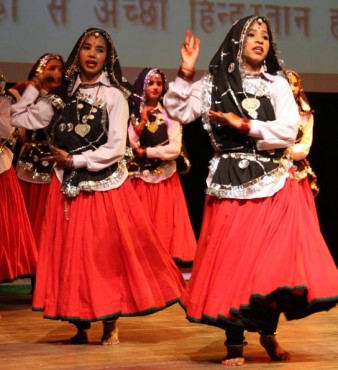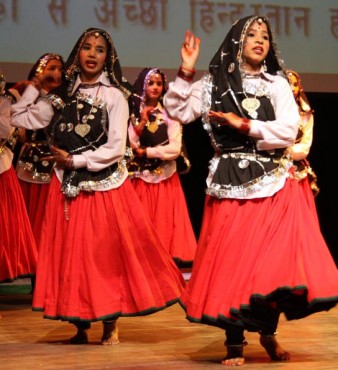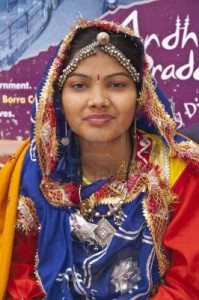
Haryana Jaat Community
Whether it is a wedding, regular day to day life, or an occasion, Indian traditional outfits are one of those ensembles that look good anywhere, and anytime, with the ability to transform themselves to complement the occasion. One such ensemble is the ethnic dress ‘Thel’, which belongs to the Haryana Jaat community.
This traditional outfit is known for its evergreen design, the bright interplay of colors and amalgamation of elaborate, intricate patterns. With a skirt like Ghagra and beautiful printed Odhni, a head gear, this traditional ensemble packs fashion, functionality that is bound to leave the wearer feeling beautiful and stylish.
Origin and History
Ghagra has been a pivotal part of Indian dressing. The style, which originated in the Northern Plains, has received subtle innovations and changes to ensure that it complements the weather and lifestyle of people wearing in it. One such innovation happened in the state of Haryana. One of its popular Jaat communities, Thel used several techniques in innovations to create indigenous designs for Ghagra ensembles, which now includes a long top or blouse, flair skirts, and intricately crafted Odhni, which is used as a headgear. The innovations have been done to ensure that women feel more comfortable during the summer season when days get hotter. That is why printed
The innovations have been done to ensure that women feel more comfortable during the summer season when days get hotter. That is why printed Odhni’s are used to protect their heads from the heat, while the Ghagra has an A-Shape design and features flair to ensure that women feel cool even while working in the fields. The blouse is made from pure cotton that easily soaks sweat and reduces feeling of heat.
Varieties and Styles
Basically, a singular style of Ghagra, Shirt, and Odhni are used throughout the Thel community of Jaat. Variety in terms of design is available. Majorly cotton is used for the ensemble, but in modern times fabrics like Georgette, Chiffon and net are also in vogue.
Generally, colors such as bright yellow, red, green, orange and blue are employed in the Ghagra, which feature pleats to give it a wide flair. This skirt like Ghagra may use golden or silver colored border that makes feature embroidery or threaded design like that of a vine. Block prints are common on overall Ghagra if there isn’t a striking border. The blouse or shirt is mostly left plain and doesn’t feature elaborate design to contrast with the printed Odhni, which has intricate interlays and patterns. Mostly, the printed Odhni may use translucent cotton or net fabric and have
The blouse or shirt is mostly left plain and doesn’t feature elaborate design to contrast with the printed Odhni, which has intricate interlays and patterns. Mostly, the printed Odhni may use translucent cotton or net fabric and have a vine like design, basic floral prints or even Zari patterns, mirror work with geometric mirror shapes along with Golden colored ‘Gota’ or threaded patterns are woven on it.
Present Day Scenario
It is the print on Odhni that currently reflects the wealth of a family. Therefore, during weddings or special occasions, alluring attention is paid to the design and print of the Odhni, with use of costly handwork serving as a subtle representation of wealth levels of a family. Colors like red, maroon or bright orange are used during weddings. A contrast between yellow and pink, red and green, blue and brown, brown and green is quite popular. Present day scenario has seen several innovations, especially in terms of the length of Ghagra. While original Ghagra were worn at knee length, the current Ghagra may be worn till the ankle.
A contrast between yellow and pink, red and green, blue and brown, brown and green is quite popular. Present day scenario has seen several innovations, especially in terms of the length of Ghagra. While original Ghagra were worn at knee length, the current Ghagra may be worn till the ankle.
Global Appeal
Undoubtedly, Ghagra designs from Jaat community of Thel have a universal appeal and global wear-ability. Mostly, this Ghagra style is used innovatively to form a Lehenga, which is a skirt similar to Ghagra but features more intricate designs, including paisley prints and motif patterns.
These are mostly used during a wedding and may be completed with Zari embroidery or regular golden colored embroidery on the blouse. Printed Odhni’s are quite popular and on a global level, prints from Haryana Odhni and the weaving of ‘Gota’ from Punjab is amalgamated for a rich pattern on this accessorizing headgear.
Reference
Categories: Attires, Clothing Styles & Drapes


